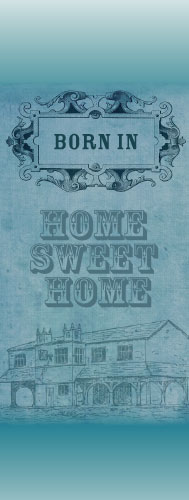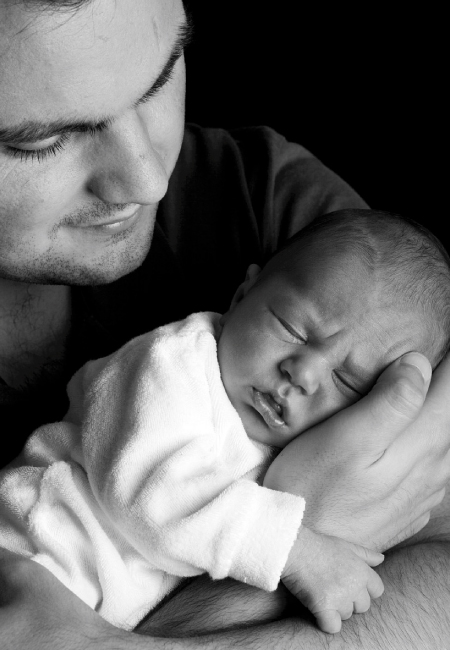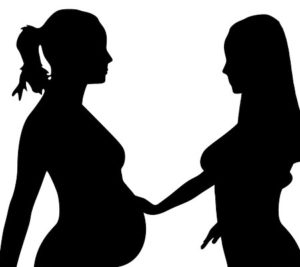When you choose midwifery care, you are participating in a time-honored tradition, in which the mother and baby are seen as more than the sum of their parts, are kept together, and are supported in their bonding process to ensure the healthiest transition. This begins in pregnancy with thorough prenatal care, and continues into the “fourth trimester.”
“Birth is not only about making babies. Birth is about making mothers–strong, competent, capable mothers who trust themselves and know their inner strength.”
—Barbara Katz Rothman
Midwives base their practice on the idea that birth is a normal part of a healthy woman’s life cycle, and that, when undisturbed and allowed to unfold naturally in a calm and supportive environment, her laboring body will instinctively know how to bring her baby to the world.
10 Facts About Midwives
- They Believe a Woman’s Body Gives Birth Naturally
- What is a midwife?
- It’s a very old profession
- They are Licensed and Trained Professionals
- They Assist Mothers to Have Birth in the Safety of Home
- Your Midwife is your Advocate
- They Provide Prenatal and Postpartum Support
- Midwives Have Been Used Since Biblical Times
- Many Midwives Were Burned at the Stake as Witches
- There are Man-Midwives.

Home birth: what are the risks?
Home birth is never a benign process. In fact, away from hospital emergency structures, future mothers always run the risk of being less well cared for if the birth were to go badly. A mother must be in good health and any pathology revealed during the pregnancy must be reported. It should be noted that homebirth is systematically refused in cases of gestational diabetes, hypertension or toxemia.
Now after your choice is made, you want to give birth at home! From now on, you’re going to have to turn to your midwife. With her, you set up your birthing project. For her part, the midwife is committed to informing you as much as possible about her area of expertise, but also to inform you of the limits of her practice. Finally, a summary chart of all this information must be signed.
Throughout the pregnancy, follow-up is provided by the same referring midwife and you refine your home birth project together. The objective of these sessions: to make sure that your requests are met, but also that information is provided on the procedures to be followed on the birthing day.
Below you can learn some important characteristics and facts about Midwives:
1. They Believe a Woman's Body Gives Birth Naturally
Midwives feel honored to be with women through the incredible process of pregnancy, childbirth, and the tender postpartum phase, to provide support, encouragement, a warm hand, suggestions for easing common discomforts and to help in facilitating a journey that is as smooth as possible. Their role is to provide options to families, and as such, education and believe it is integral to the care they provide. Information is power! By presenting, in an unbiased way, options and information to the expectant family, they are able to choose best for themselves that which fits their lifestyle and aligns with their belief systems.
What has been observed in practice is that labor works best when a woman is in an environment that feels safe, familiar and comfortable to her. A labor that is healthy and efficient is best supported by the hormones that are activated in an intimate setting. Also, the power dynamic feels different – during your home birth, the midwife is a guest in your home; it is your turf, and you are in charge. She is simply there as a guardian for safe passage, and a gentle transition. She will also carefully, but unobtrusively, monitor the health of the mother and baby throughout the childbearing year, continuously assessing whether what is developing falls within the range of “normal,” or is a special circumstance requiring transfer to a doctor.
On the baby’s side of things, midwives believe that birth is where the deepest impressions of life are laid down, and work to facilitate an experience for the infant of love, connection, bonding, and gentle touch. They believe babies are fully-formed, sentient beings, who experience the same spectrum of emotions as an adult, with less filtration and more exquisite clarity. As such, the midwife will talk to and treat the baby with the same level of respect as she would do with anyone else.
2. What is a midwife?
Midwives provide professional supervision of the pregnancy and give birth and care for the very young mother and newborn. As well as help couples to prepare for birth and parenthood. They also handle perinatal rehabilitation related to childbirth.
Additional education allows midwives to perform homeoprophylaxis, or acupuncture and even osteopathy to relieve some of the ailments of pregnancy. Ask your midwife about additional services.
3. It’s a very old profession
The word midwife comes from the old English Mit-wif, which means “with woman.” and dates back to around 1300s. It is, therefore, a person who has the knowledge of the woman (of her body, her psyche, and her physiology).
However, many ancient texts talk about women who performed in the role of a midwife for centuries.
4. They are Licensed and Trained Professionals.
Their credentials are at least LM (licensed Midwife) and CPM (Certified Professional Midwife). These women are trained to handle your low-risk birth, and in many states, in the comfort of your own home.

5. They Assist Mothers to Have Birth in the Safety of Home
There have been a number of clinical studies on the safety of homebirth for normal, low-risk women receiving good prenatal care. Practically all of them show that homebirth is either as safe, or safer, than hospital birth – for low risk, healthy pregnant women with normal pregnancies. The main study describing homebirth as more dangerous is a study that was done by the American College of Obstetricians and Gynecologists in 1978 called “Health Department Data Shows Danger of Homebirths.”
This study included all out-of-hospital births, including unattended births in the home, births en route to the hospital, mothers who may have been high risk, had received no prenatal care, and babies who were pre-term. This factor, which skewed the results, was not widely acknowledged. In fact, this report also included miscarriages in its data showing the risks of homebirth. Clearly, this report is not representative of the kind of homebirth that midwives are offering. And interestingly enough, it seems to be the ONLY study that showed homebirth to be less safe than hospital birth, although many studies have tried.
6. Your Midwife is your Advocate
The midwife is always at your side. She’s going to take care of you, the baby and the delivery equipment.
It is you who, as far as possible, are in control of your delivery. You feel less constrained and more serene. Midwives are present if you need them, and listen to your desires. Even during childbirth, they only intervene if you want, and let you do as you feel. Once the child arrives, you would be able to take full advantage of it while the midwives bring you care and clear the equipment used for the birth.
Because pregnancy and birth are natural physiological events, normal birth does not belong in hospitals.
The natural course of labor is already perfect and should be interfered with as little as possible. Pain is part of an essential and healthy feedback mechanism in labor, which women can learn to cope with, with proper encouragement and support.
Medical management of pregnancy and birth should be limited to those that are medically complicated.
Unnecessary medical interventions complicate normal labor, creating additional risk and the need for more intervention.
*excerpt is taken from Birthing from Within by Pam England, CNM, MA, and Rob Horowitz, Ph.D
7. They Provide Prenatal and Postpartum Support
During your pregnancy, it is best to see your Midwife as soon as possible. Your midwife is the only practitioner you will see and can assess your pregnancy for you each step of the way.
While in childbirth your midwife will assist you in handling the birth calmly and as efficiently as you can. She will want you to hold your baby as soon as you can, in contrast to being whisked away from you for testing.
When you are with your baby, your midwife will want to monitor you over the next few days. Not only will she want to see you heal quickly, but also make sure the baby is breastfeeding and functioning normally.
8. Midwives Have Been Used Since Biblical Times
Women that handled all the responsibilities of a Midwife have been recorded as early as the book of Exodus. That’s as early as the 6th Century BCE. Exodus 1:16-20.

Total Midwives per Country
- Australia – 33,490
- UK – 21,630
- Japan – 12,795
- US – 11,927
- Canada – 1,690

9. Many Midwives Were Burned at the Stake as Witches
At one time, the Roman Catholic Church had a very hard time accepting female healers of any kind. Midwives were many times tortured and burned at the stake. Female healers of any kind were often unjustly persecuted throughout England and other countries including the United States.
10. There are Man-Midwives.
Many women have a hard time being consulted by a male gynecologist, but how about a man-midwife? But this profession has been alive and well since the 18th century. Though it’s not as popular today, they still exist, but more-so in the UK.

